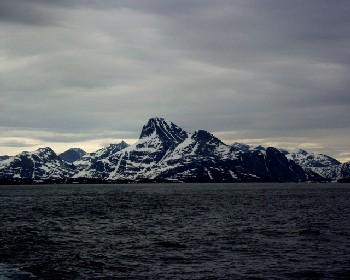
|
|
16 June, 2000
Geology and Biology
Today, we are in the process of sailing back to Nuuk, Greenland. While
there is a lull in the science experimentation, I am going to take this
opportunity let you know what we will be doing over the next two weeks.
During the next leg of the trip, the coring capabilities of the Healy. will
be the major focus of our testing. Larry Lawver from the University of Texas
at Austin will be meeting up with us in Nuuk. He will be sharing his
expertise in Geology with us. We will be completing another rock dredge and
taking core samples from the ocean floor.
Greenland has the oldest known rocks found on the Earth. Much of the
island is composed of metamorphic rock that is over three billion years old.
One formation near Nuuk dates back 3,700,000,00 years ago. Considering that
scientists believe that the Earth is 4.5 billion years old, you can see why
the geology of Greenland is very intriguing to geologists.
While we are in Nuuk, we will also be checking the Biodiscs we placed at
the pier before we headed out on our first leg. Biodiscs are plexiglass
discs with holes cut in the center. They are usually suspended in a
vertical line, for an extended period of time, in the water. The discs will
first develop an algal film and then will be populated by larger organisms
such as barnacles and mussels, if left out for a sufficient length of time.
They have been used by the Maryland Sea Grant to monitor water quality and
biodiversity of Baltimore's Inner Harbor. Since our discs have only been
out for a week, there will be very little information gathered. We will
probably have a minuet amount of algae growth to inspect. It will be of
interest to myself, because this will be a project that I will be able to
easily incorporate into an arctic studies program back in Nome.


Contact the TEA in the field at
.
If you cannot connect through your browser, copy the
TEA's e-mail address in the "To:" line of
your favorite e-mail package.
|
